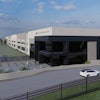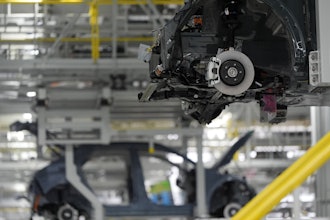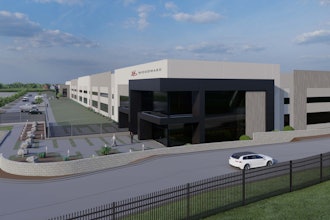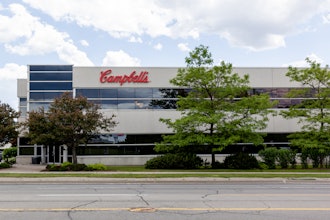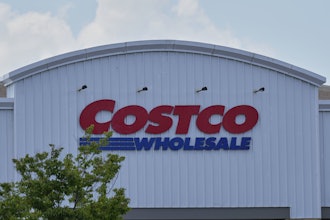Today’s customers demand multiple versions of products and a greater variety of them, leading to a proliferating volume of SKUs that require larger pick zones and more storage space within the warehouse. The placement of shelves and containers, along with the traffic patterns and total design of the building, ultimately affects the ability for you to utilize any space available. The proliferation of Stock Keeping Units has become an explosion – brand extensions, new colors, new flavors, new packaging, promotions, lite products, gluten-free everything, new digital device releases, and the addition of SKUs goes on and on and on…
Most of the time, that means cramming increasingly more product into the same amount of DC space, which overburdens equipment and processes, overwhelms labor capacity, and undermines productivity. With many DCs already stretched nearly to the breaking point – and with no end to SKU proliferation in sight –companies are struggling to find new ways to accommodate the excess.
Additionally, consumers are placing more frequent orders of smaller sizes to be delivered to their home or to another location for pick up. To keep up with the ever-expanding inventory and the need for speed (of order delivery), DC operations need better storage of items and faster throughput.
To improve storage of items in the warehouse, first you must understand the way that shelves and space are being utilized. Evaluate slotting and re-slot often to make sure each product is put in the optimal location to minimize travel and touches. Having a discrete pick location for each SKU eliminates the need for pickers to sort through multiple SKUs in a pick location to find the right one. Accuracy is improved along with speed of the picking operation.
Each Picking With Bins and Totes
With the increase of e-commerce orders, warehouse workers have to pick more orders with smaller units. Order picking is broken down into a variety of pick methodologies, one being “each” picking or “split case” picking. This is for products that are sold in less than full case quantities, typically individual products, such as for e-commerce orders. Once the item is picked, it is placed in a container (bin, tote, etc.) and transported via a conveyor or cart to the next state of the picking process.
Bins are typically made from plastic and are available with collapsible sides or are stackable. Some have a hopper front (front is cut out) which makes it easy to see what is inside the bins and easier to pick from. Bins can hold a variety of weights, from one pound to hundreds of pounds, depending on the thickness of bin walls or the materials they are molded of; for example bins made of fiberglass can hold thousands of pounds.
Some bins are made of polyethylene that can resist chemicals, acids and grease. Others have a hopper front and back for dual-sided picking. Some bins support insert dividers to separate products in the bins. Other types of bins include:
- Hanging Bins – Louvered panels allow bins to hang from all four sides or at an angle to keep parts visible and easily accessible. Flat-side hanging lip keeps bin level when hanging for maximum fill capacity. Rear hang lock allows bin to tilt out on steel or wire shelving units. Some hanging bins are made of wire mesh to prevent dust and dirt.
- Tip Out Bins – Bins that offer tilt-out drawers for quick grasp of small items; typically have clear front so items can be easily seen.
- Mobile Bins – Bins with wheels to move around.
- Unit Dose Bins – Bins that fit on wide shelves or mount on gravity flow rails; feature hopper fronts and typically used for things like strips.
- Stacking Bins – stack when not in use to eliminate wasted space of empty bins.
Storage and Shelving
You can’t consider totes and bins without thinking about the storage units these products will be used on. Some storage units feature slant shelves that allow easy access to contents and promote first-in first-out (FIFO) rotation of contents, which are especially useful in assembly lines or when picking items with expiration dates.
Flow racks use shelves made of round mobile tubes, allowing boxes, totes, bins and other containers to easily slide in and out for easier storage. Tote carts are useful when multiple picking items from different locations in the warehouse.
Often, overhead space is not typically used, so to save on space, you can install a Vertical Lift Module, a type of automated storage and retrieval system (AS/RS). The Vertical Lift Modules (VLM) are fully automated vertical storage systems that hold products in storage bins. They have a modular design and take up a minimum footprint while maximizing use of the height of the warehouse. Every VLM can be employed as a standalone system or integrated into a linked system. These systems allow for a relatively large inventory of goods to be quickly accessible to a picking station while being stored safely and securely in their bins.
Mobile shelving offers flexibility and convenience by bringing items to be picked closer to the assembly line or wherever needed. Mobile shelves offer short-term storage systems that meet the needs of rapidly changing operations, such as for seasonal items. With wheels, these shelving units can conveniently be placed in different areas for production runs when process stages vary from day to day.
DMW&H is a material handling systems integrator that maximizes efficiencies, speeds fulfillment and improves throughput in warehouse operations with automation and services. With almost 30 years experience working for a national material handling systems integrator, Bob Reinhartsen has been involved with well over 150 integration projects and has visited hundreds of warehouses/distribution centers across the country. His background in both project management and sales has given him a well-rounded understanding of distribution and order fulfillment operations.

